Govt making policy on old data
Aurangzeb slams PBS for decade-old, unreliable economic indicators

Finance Minister Muhammad Aurangzeb on Tuesday lambasted the Pakistan Bureau of Statistics (PBS) for its failure to timely produce reliable economic and social indicators, as the bureau blamed political turmoil for its inability to timely hold surveys.
The proceedings of a meeting held at the Q Block reinforced that the government was making economic decisions based on data, which was 10 years old, and many of the critical official economic numbers were also not reliable, according to officials who attended the meeting.
Sources said that the finance minister was perturbed by the delay in having the latest numbers on poverty, unemployment, reliable data on economic growth and other critical indicators.
Aurangzeb asked his adviser Khurram Schehzad and Chief Economist of Pakistan Dr Imtiaz Ahmad to review the sourcing and processing of data by the PBS for the purpose of producing reliable indicators.
Sources added that the chief statistician of the PBS claimed that the surveys could not be finalised on time due to political uncertainty. Meeting participants did not accept the explanation and inquired whether any minister issued instructions to stop the surveys.
The chief statistician was not available for comments. PBS works under the administrative control of the Ministry of Planning.
The meeting was informed that a majority of surveys had been conducted many years ago. A couple of surveys were held last fiscal year but their results were not ready.
The finance minister had called the PBS to explain reasons behind the lack of availability of latest and credible data on poverty, unemployment, GDP growth and per capita income.
The government's claim that the economy grew 2.7% in the last fiscal year is disputed by many independent experts. The finance minister had also promised to constitute a committee having representation from the private sector to probe the GDP growth figure. So far, he has not established the committee.
The chief statistician told the meeting that the economic growth may remain close to 2.7% but the final position would be clear by September this year, said the sources.
One of the reasons for disputing the 2.7% growth claim was that the government showed the livestock sector grew 4.8% while the last livestock survey had been conducted in 2005-06.
The chief statistician explained that the bureau did not have the exact number of livestock but was working out the sector's growth based on how much fodder was being consumed every year by animals.
Questions were also raised over giving 63.6% weight to livestock in the agriculture sector while the share of crops is only one-third.
The meeting questioned the PBS for its failure to work out a reliable figure of per capita income. The government had claimed that the per capita income in fiscal year 2024-25 was $1,824 based on a low population number.
The country also does not have the latest poverty number, as the last Household Integrated Economic Survey (HIES) was conducted in 2018-19. HIES measures the income and consumption patterns.
The meeting was informed that the HIES 2024-25 field operation had been completed but results would be available by December 2025. About 2,000 blocks and 28,000 households have been covered all over Pakistan. HIES provides information about poverty, undernourishment, food insecurity and quarterly income and consumption patterns.
The World Bank last month updated its global threshold to measure poverty, resulting in a significant jump in the number of people living below the poverty line in Pakistan. According to the new $4.20-per-day threshold, which replaced the $3.20 ceiling, poverty increased to 44.7% in Pakistan.
The 44.7% figure was exclusive of any adverse impact of Covid-19 and the 2022 devastating floods in Pakistan. Compared to this, the official poverty rate is only 21.3%.
The meeting was informed that the last Labour Force Survey had been conducted in 2020-21, which provided five-year-old data. The latest survey has been completed but results will be available in December. The labour force survey provides information about unemployment in the country.
PBS also could not conduct the Pakistan Social and Living Standards Measurement (PSLM) Survey, restraining policymakers from providing timely information about education, healthcare, housing, water and sanitation, information technology, food insecurity, disability and migration.
There has been a phenomenal increase in migration from Pakistan due to the limited employment opportunities. But there is no survey to gauge it. The meeting was informed that the next round of PSLM is planned for 2026.
The situation is also poor in the case of agricultural and manufacturing census and the government is producing GDP growth figures based on old manufacturing structures. The old manufacturing census did not capture the impact of latest disruptive technologies.
The last manufacturing census was conducted in 2015 and the next is planned for 2026-27. It provides information on structural changes in large-scale manufacturing industries and assigns weight to the quantum index of manufacturing.
Pakistan's national accounts are also based on 2015-16 data, which the PBS is now planning to shift to this year. In the fresh rebasing, the government will also capture economic growth at regional levels.
The meeting was informed that the agricultural census field activities had been completed and the tabulation of findings was under process. The census will capture agricultural, livestock and machinery numbers.

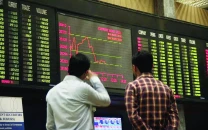


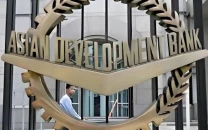

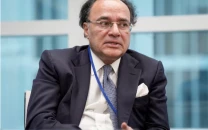




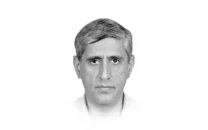
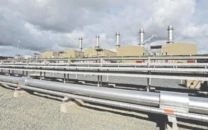


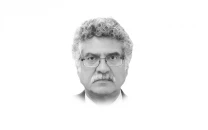



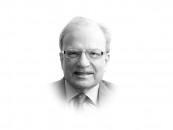
COMMENTS
Comments are moderated and generally will be posted if they are on-topic and not abusive.
For more information, please see our Comments FAQ